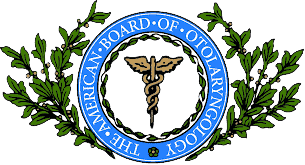You are feeling the symptoms come on. Cough, check. Sore throat, check. It’s not long before you’re contemplating an unsettling question: Is it a sinus infection — or is it COVID-19?
Sinusitis and COVID-19 both have many of the same symptoms, which means it is difficult to determine the cause of your illness without taking a COVID test or seeing a sinus doctor like Dr. Marc Kayem.
COVID-19 is caused by a new coronavirus (SARS-CoV-2), and sinus infections happen when fluid builds up in the sinus pockets in the face, which allows germs to grow. Sinusitis can be either viral or bacterial, though viruses are most common.
What Sinusitis and COVID Have in Common
The two different illnesses can affect the sinuses, causing congestion, headaches and sore throats.
SINUSITIS SYMPTOMS
|
COVID SYMPTOMS
|
Source: CDC COVID, CDC Sinusitis
COVID-19 symptoms typically appear 2-14 days after exposure to the virus. If you have had contact with someone who has previously tested positive for COVID or have traveled or had contact with several people in recent days, it is wise to isolate yourself until you can confirm whether you could be contagious.
You are more at risk for a sinus infection, however, if you have had a previous cold, seasonal allergies, are a smoker or have had exposure to secondhand smoke.
How Sinusitis and COVID Differ
While it’s easy to get caught up on the similarities, there are several symptoms of both Sinusitis and COVID that do not overlap, and could give you a clue on what is actually ailing you.
To simplify: COVID-19 manifests in the chest, whereas Sinusitis centers on the face.
With COVID, you’ll see more of a dry cough, loss of taste and smell, and respiratory symptoms.
Additionally, fever, muscle aches, nausea and diarrhea are associated with COVID, not Sinusitis.
With Sinusitis, you’ll feel more facial pain: congestion, nasal drip and facial pressure. Drainage from the nose down the throat could cause a wet cough. Itchy eyes and sneezing are also related to allergies/colds/sinusitis — not COVID.
To rule out COVID, check local sources for testing. Nose swab tests can detect COVID, and testers will provide you with information on how to quarantine and treat the coronavirus.
Help for Sinusitis Diagnosis
If you suspect Sinusitis, contact an experienced doctor such as Dr. Marc Kayem for an examination.
Dr. Kayem and his staff take patient comfort to a new level, assuring the best care from the first time you call the office.
To determine a diagnosis, Dr. Kayem performs a thorough examination of the nasal passages and airway, which could include the use of a long, flexible camera called a Nasal Endoscope, and/or CT scans when necessary.
If your sinusitis becomes chronic or recurring, it’s probably time to consider a permanent solution. Dr. Kayem does perform traditional endoscopic surgery but has found that Balloon Sinuplasty is a better option for most people.
The minimally invasive procedure is performed in just one 45-minute office visit, and there is no downtime. Most insurance covers the treatment, which has a success rate of over 90 percent.



